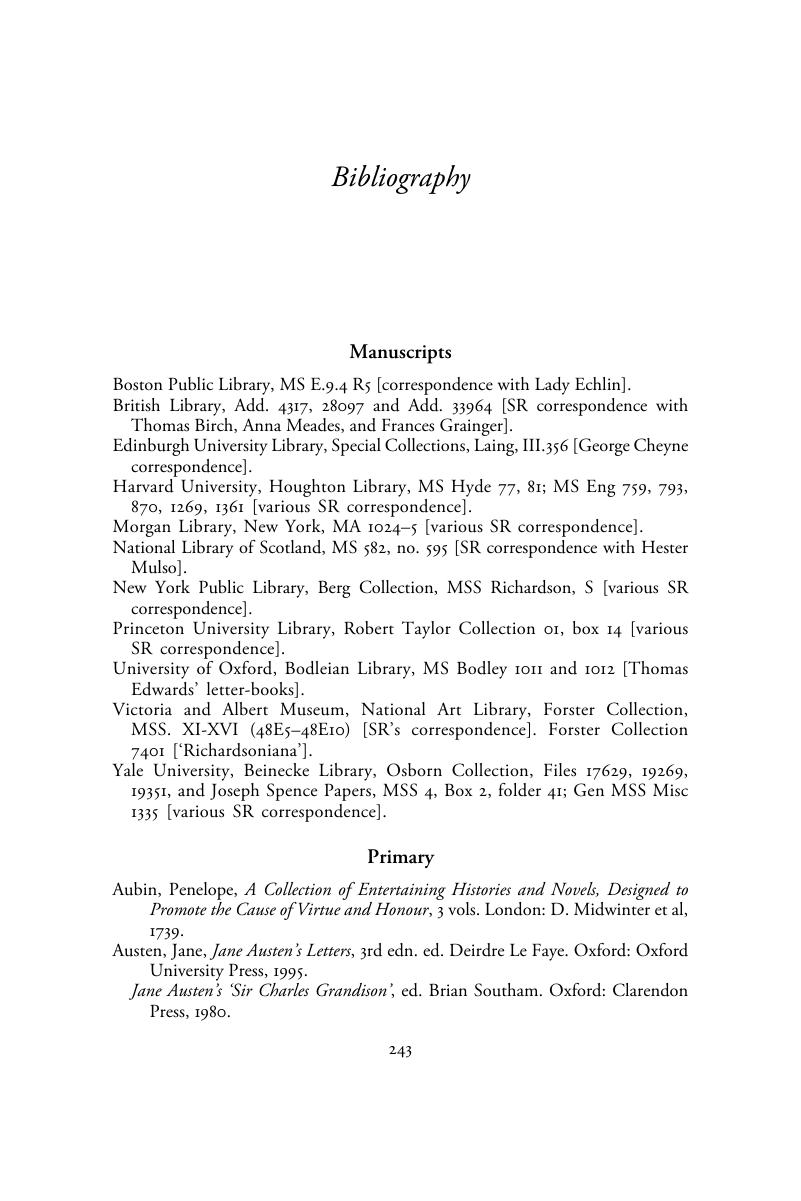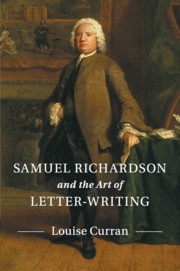Book contents
- Samuel Richardson and the Art of Letter-Writing
- Samuel Richardson and the Art of Letter-Writing
- Copyright page
- Dedication
- Contents
- Illustrations
- Prefatory note
- Book part
- Glossary
- Introduction
- Chapter 1 Forming a style
- Chapter 2 Lady Bradshaigh’sClarissaand the author as correspondent
- Chapter 3 Trifling scribes
- Chapter 4 TheGrandisonyears
- Chapter 5 Editing letters in an age of index-learning
- Conclusion
- Notes
- Bibliography
- Index
- References
Bibliography
Published online by Cambridge University Press: 05 March 2016
- Samuel Richardson and the Art of Letter-Writing
- Samuel Richardson and the Art of Letter-Writing
- Copyright page
- Dedication
- Contents
- Illustrations
- Prefatory note
- Book part
- Glossary
- Introduction
- Chapter 1 Forming a style
- Chapter 2 Lady Bradshaigh’sClarissaand the author as correspondent
- Chapter 3 Trifling scribes
- Chapter 4 TheGrandisonyears
- Chapter 5 Editing letters in an age of index-learning
- Conclusion
- Notes
- Bibliography
- Index
- References
Summary

- Type
- Chapter
- Information
- Samuel Richardson and the Art of Letter-Writing , pp. 243 - 260Publisher: Cambridge University PressPrint publication year: 2016



